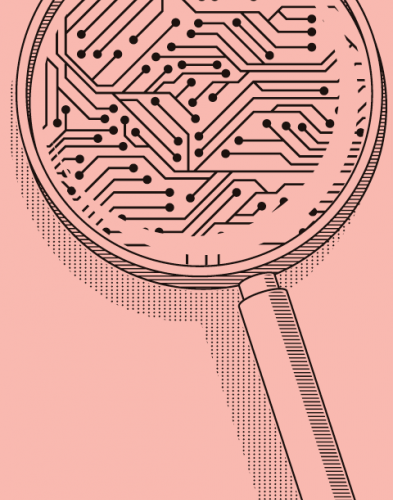As technology continues to develop at an increasing pace, it’s becoming an invaluable tool for those working within and accessing healthcare – professionals, companies and patients.

Astechnology continues to develop at an increasing pace, it’s becoming aninvaluable tool for those working within and accessing healthcare –professionals, companies and patients.
Everyone’stalking about Artificial intelligence (AI), yet globally it’s looked upon with amix of wonder and dread. In order to prepare for AI and use it in the bestpossible way, we need to adopt some critical thinking.
The theorybehind AI began in the 1940s, meaning we’re discussing atechnology that has evolved over the past 70 years. AI is defined as ‘acomputational model that simulates anintellectual task’.
In general,AI is an excellent tool to categorise and perform predictive tasks. In academicterms, AI is a subdomain of computer science and like so many other areas ofknowledge, it has many disciplines. One of the most prominent is machinelearning.
AIapplications are successfully used in a number of human endeavours, from gamesand simulations to credit analysis. Nobody can now doubt its relevance. Sincethe advent of AI, much has been discussed about the future of work,professions, customs and even humanity itself, and this technology has prompteda spread of negative rather than positive ideas.
I’d ratherliken AI to being a ‘glass half full’.
Forexample, within the healthcare sector, we know that 40% of a professional’stime is spent on bureaucratic tasks. In the meantime, patients are waiting inneed of care. AI gives us more time todeal with what matters most: human beings in need.
Severalmodels are already safely and successfully used; one technology, for example,identifies skin cancer on a photo taken through a specific lens you attach to your phone camera! A Google-developed application can run over50 sight -related diagnostics from a single eye examination and a start-upspecialising in radiology has algorithms that diagnose lung cancer from a chestX -ray. Imagine the positive impact such applications can have in communitieslocated far away from major specialist centres, communities so numerous inBrazil.
There areother examples of technologies that assist remote patient care: an Americanstart -up uses AI to analyse smart watch data to diagnose diabetes withoutusing a single drop of blood, with 85% accuracy. Even for primary care thereare solutions like ADA, a Canadian chatbot that discusses symptoms with usersand suggests possible diagnoses with daunting assertiveness.
Whether youconsider the clinical, experiential or financial impact, AI gives scalableaccess to quality health services!
At 3778Healthcare, we are a driving force behind AI research.
Among theprojects we’ve already implemented is a predictive model for high -riskpatients. Based on the health history of an organisation’s members, our modelpredicts and indicates who may become a high -risk patient over the next 12months. Anticipating possible health events and undertaking a preventativeapproach could have a huge impact on the health of individuals and populations.
In a clinicalcontext, we have meaningful data which allows us to predict the duration of ahospital stay for a given patient, starting three hours from admission. It’shard to believe we can estimate how many days a patient will stay in hospitaland brief whole clinical teams on possible complications and areas that demandattention.
No lesschallenging are some of our new projects. The first is a joint project withLatin America’s largest public radiology service, where we use neural networksto estimate brain age through magnetic resonance imaging; forming a basis topredict the onset of dementia. Another is a system of predictive algorithms toincrease patient engagement, tailoring and advancing recommendations andcontinually learning better ways to relate, taking into account patients’preferences and clinical needs.
Amidst thehype however, there is need for a word of caution: AI isn’t always the besttool for every situation, even when it’s analysing or classifying statisticswithin a large data set. Technology does not drive innovation. A restless,questioning mind leads to new solutions – and we sometimes reinvent old toolsto deliver these. Cutting -edge technology can make us soar, true. But thedesire to fly must come from within ourselves.
Guilherme Salgado is a medical doctor inBrazil. He graduated from the Universidade Federal de Minas Gerais (UFMG /Federal University of Minas Gerais), with a Medical Residency in OccupationalMedicine from its Clinics Hospital and an MBA in Executive Management fromINSPER. In the book, Patologia do Trabalho (Work Pathologies), he is co‑ ‑author of the chapters ‘Princípios ePráticas de Promoção da Saúde no Trabalho’ (Principles and Practices to UpholdOccupational Health) and ’Tensões por Trocas Térmicas: Calor’ (Thermal Exchange‑Related Tension: Heat). Hisextensive professional experience includes working as associate consultant atRene Mendes Consultoria, consultant to the International Labour Organization,benefits superintendent at Safra bank, consultant to the Health Cesar Institute,new business consultant at Sírio ‑Libanês hospital and head ofbusiness development at Kunumi Artificial Intelligence. Guilherme co ‑founded TEG Saúde and is ceo at 3778 Healthcare.



